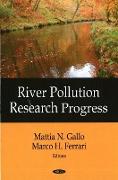River Pollution Research Progress
BücherAngebote / Angebote:
The size and importance of the world's rivers are measured in terms of discharge and length. A river's importance may also be measured in terms of local and regional water availability and population. A small river flowing through a densely populated, arid region may be extremely important, for example. Rivers flow downhill from their sources to their mouths at the sea. Although the world's major rivers flow through many different types of terrain, they provide similar physical and biological functions. Rivers transport sediments from their basins to the sea through the processes of erosion, transport, and deposition. In a river system's upland areas, erosion is the dominant process. Tectonic processes result in the uplift and formation of major mountain chains, while the world's major river systems help erode those mountains. A river's flow is halted when it reaches the sea, where the river deposits its sediments and creates a delta. River deltas commonly assume a triangular pattern that resembles the Greek letter delta (?) a letter based on the shape of the Nile River delta in northern Egypt. Fresh water and salt water meet in these deltas, which are some of the world's most biologically productive areas. The world's major river systems are storehouses of biological productivity and diversity. Rivers and their floodplains provide habitat for aquatic and terrestrial species. Many of the world's large rivers experience an annual flooding cycle that is important for spreading water, nutrients, and sediment into floodplains as well as providing reproductive cues for fish. This new book presents up-to-date research on this important field.
Folgt in ca. 10 Arbeitstagen

